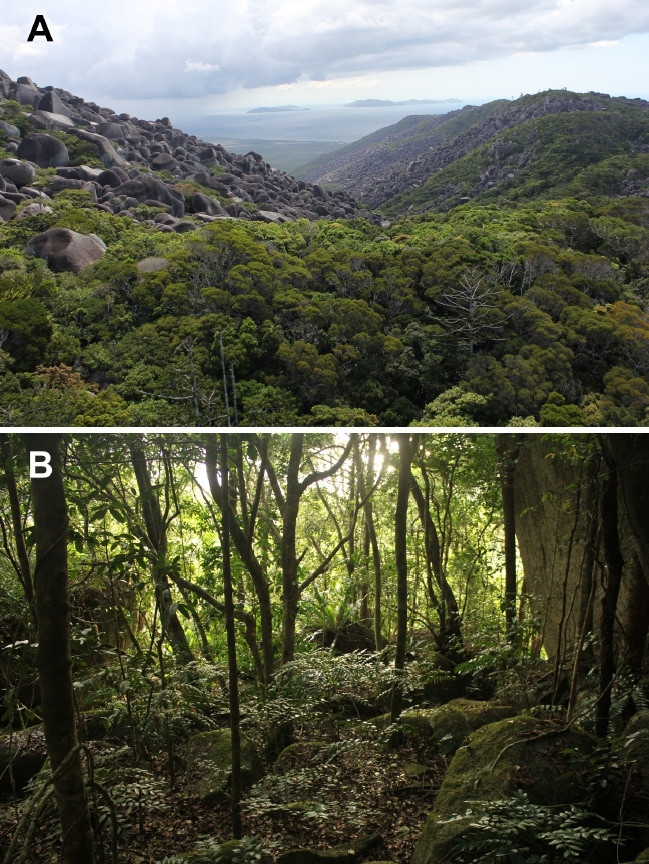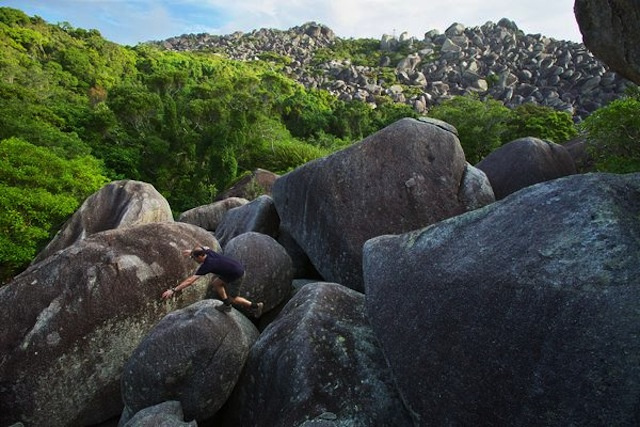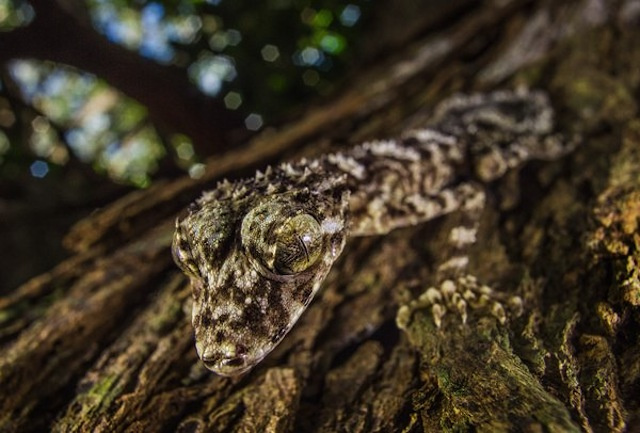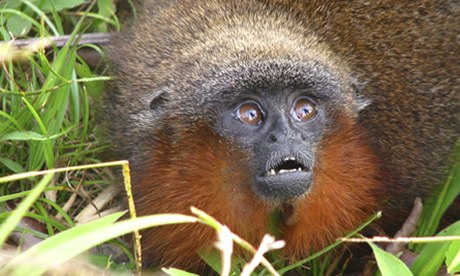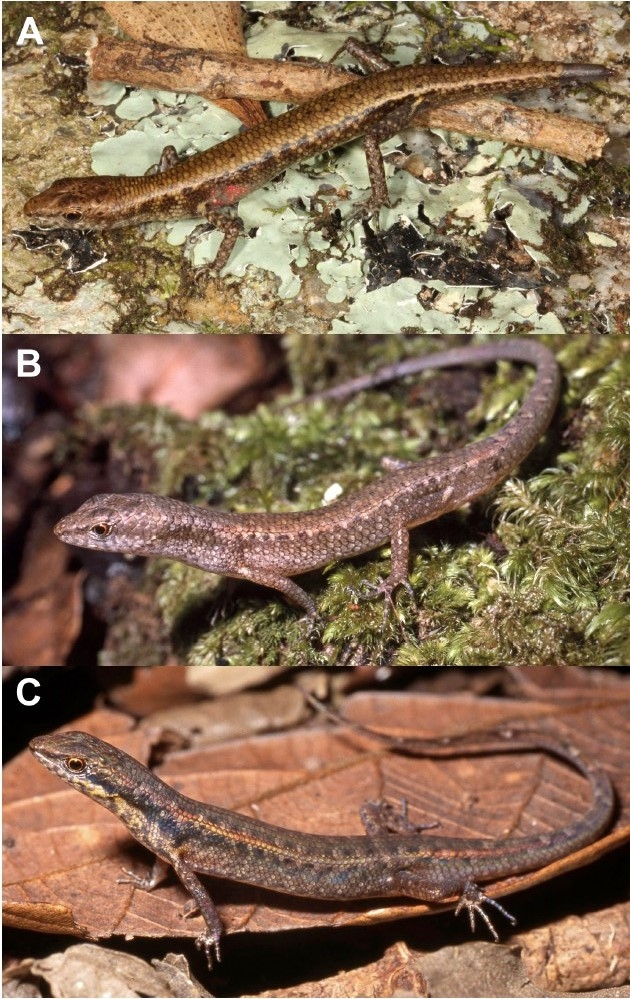In The Meantime... Scientists Discover 'Lost World' With Never-Before-Seen Species
Scientists have found what they're describing as a "lost world" on the northern tip of Queensland, Australia, hosting at least three previously undocumented species, including a frog that makes love in the rain.
Scientists have discovered a "Lost World" in a rainforest perched on boulders in a remote part of Queensland
For the past few millennia, the dewy rainforests of Australia's Cape Melville have remained totally isolated from human interference. That is, until a team of scientists from James Cook University took humanity's first steps into a land untouched by time. What they found there was almost beyond belief.
dailymail.co.ukCalling the unprecedented discovery a "lost world," the scientists were only able to reach the roughly two-square-mile patch of land by helicopter thanks to the "monstrous wall" of "millions of giant, piled up boulders the size of houses and cars."
And if that's not enough of a challenge for you, this impassable monument to nature's prehistoric processes extends for a grand total of nine miles.
How, then, did Dr. Conrad Hoskin, one of the leaders expedition, find this discovery of a lifetime? The same way we find anything these days: Google.
voiceofrussia.comDr. Hoskin had known about the range for more than a decade, but the seemingly insurmountable obstacles to reaching it had limited scientists to doing research in the range's lowlands.
skyvalleychronicle.comWith the advent of Google Earth, though, and its revelation of the lush tiny patch of green atop piles of monstrous black granite boulders, he was inspired to take a second look. But no satellite imagery could prepare him for what he was about to see.
telegraph.co.ukThe "Lost World" has more than 400 new types of animals and plants
The second the team of NatGeo-funded scientists stepped of their helicopter, they quickly realized they were stepping down into a land actually frozen in time, the kind of stuff we've only ever been able to see in movies.
telegraph.co.ukThe "incredible rainforest," "good earth," and "clear, flowing streams" weren't even the exciting part. The truly amazing part were the incredible creatures that had been "isolated from their closest cousins for millions of years."
As Dr. Hoskin told The Telegraph: We're talking about animals that are ancient — they would have been around in the rainforest of Gondwana... rainforest that's been there for all time. I was just walking around along the ridge line and there was this small lizard, a skink, that was something completely new, (in the picture below).
 dvice.com
dvice.com
Modern skinks generally scurry around in beds of leaves, keeping close to the ground where its safest for them. This evolutionary ancestor, though, jumps from damp, mossy boulder to mossy boulder on its hunt for insects.
The second groundbreaking discovery was something that Dr. Hoskin had spotted transiently before but hadn't been able to identify until now—a "beautifully blotched frog with orange in [its] legs."
cnn.comHoskins dubbed the incredible new amphibian the Blotched Boulder-frog for obvious reasons, and one of the most interesting things about this creature compared to its more evolved cousins is the fact that it doesn't need a pond to reproduce.
dailymail.co.ukThis frog species needs only the moist cracks of the rocks that make up its home to lay eggs. Because there's no protective body of water, the tadpoles develop into fully formed froglets before they even start hatching.
And then, coming back by night, we saw an incredible leaf-tailed gecko. This thing was mind-blowing, completely bizarre. It's really big, around eight inches with long spindly legs and huge eyes.
That this gecko was hidden away in a small patch of rainforest on top of Cape Melville is truly remarkable. What makes it even more remarkable is that two other totally new vertebrates were found at the same time.
A purring monkey and a flame-patterned lizard are also among the new species of animals and plants that have been discovered
Among the new species discovered is a "purring" Caqueta titi monkey (Callicebus caquetensis) of the Colombian Amazon, whose babies have an endearing trait: "All of the babies purr like cats," said scientist Thomas Defler, who helped discover the species. "When they feel very content they purr towards each other, and the ones we raised would purr to us."
A 'purring' Caqueta titi monkey (Callicebus caquetensis). Photograph: Thomas Defler
Image via guim.co.ukA "warpainted lizard" (Gonatodes timidus) was discovered in the part of the Amazon that extends into Guyana. Despite its extraordinary colouring, this lizard is very shy and has a tendency to avoid being seen by humans.
 dvice.com
dvice.com
Discovered through hundreds of scientific expeditions between 2010 to 2013, the total of 441 new species – all new to science – includes 258 plants, 84 fish, 58 amphibians, 22 reptiles, 18 birds and one mammal. This tally does not include discoveries of insects and other invertebrates.
dailymail.co.uk